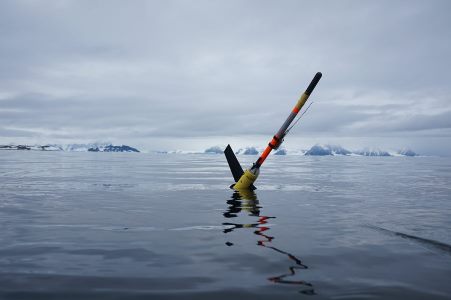Autonomous Underwater Vehicles

Underwater gliders are a type of robotic underwater vehicle that uses an expandable oil-filled bladder to change the buoyancy of the vehicle instead of using a conventional propeller. As the liquid is pumped into or out of the bladder, the volume of the glider changes while its mass remains the same. As a result, its density changes and allows the device to rise or sink through the water. Its wings turn this vertical motion into forwards motion.
Gliders are extremely energy-efficient in terms of both their propulsion and instrumentation, making them a useful tool for gathering long-term data from the oceans. Depending on the sensors and instruments used, gliders can be deployed for up to 6-9 months. They can be directed via two-way satellite communications link while at the ocean surface.
Gliders at British Antarctic Survey (PHOBOS)
The British Antarctic Survey (BAS) contributes to the glider fleet operated by NERC (National Environmental Research Council) through its affiliation with the National Oceanography Centre. The gliders procured by BAS have been seconded to Rotheras in the Antarctic to contribute to ongoing biogeochemical research and oceanic studies.
Teledyne Slocum Gliders
BAS has two operational Teledyne Webb Research 1-km G2 Slocum gliders, named Swallow and Amazon.
iRobot Seaglider - BAS took delivery of an iRobot Seaglider in 2012. For details, please contact Sophie Fielding - sof@bas.ac.uk